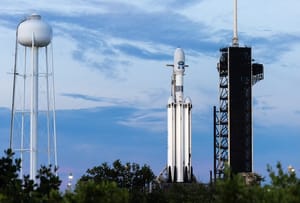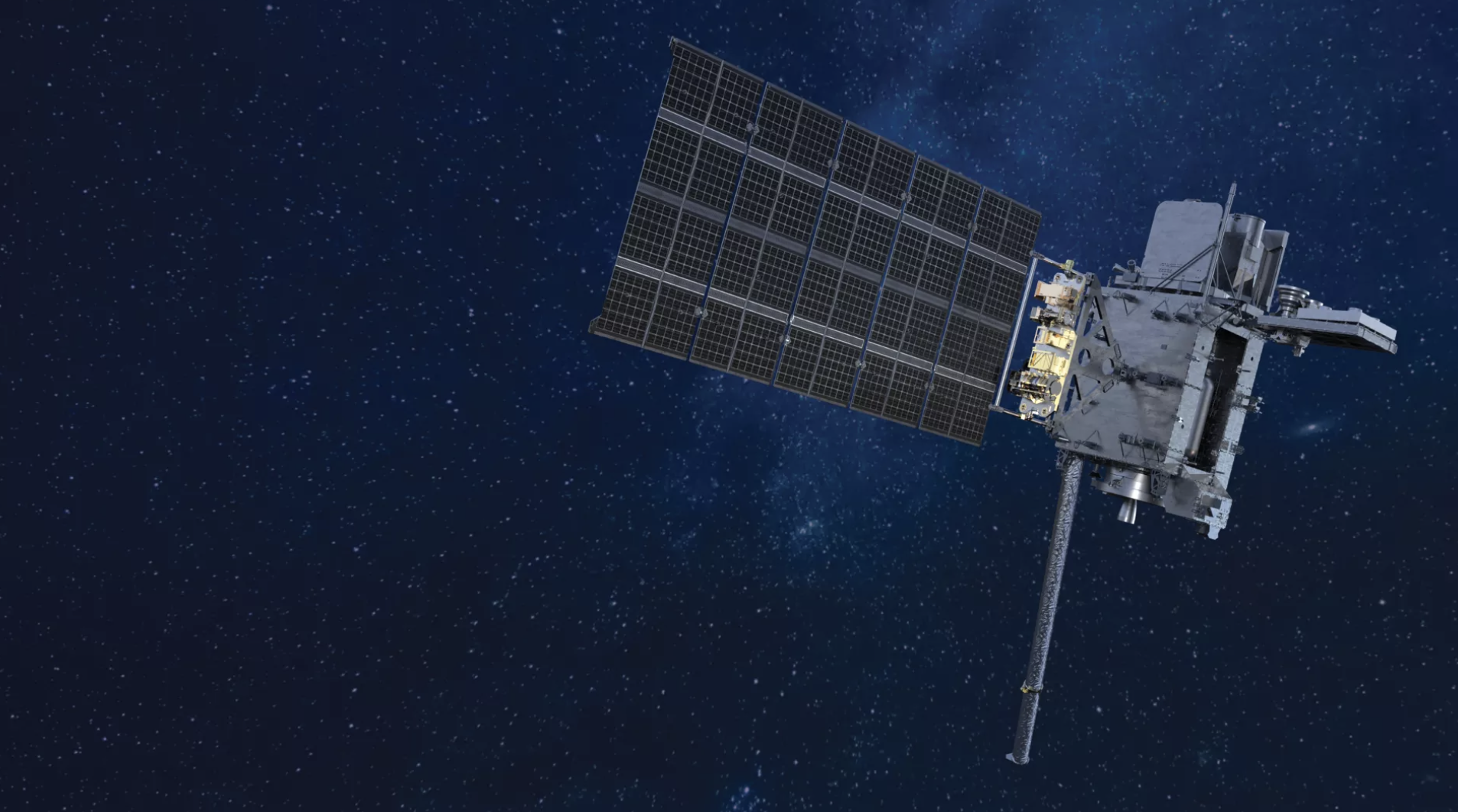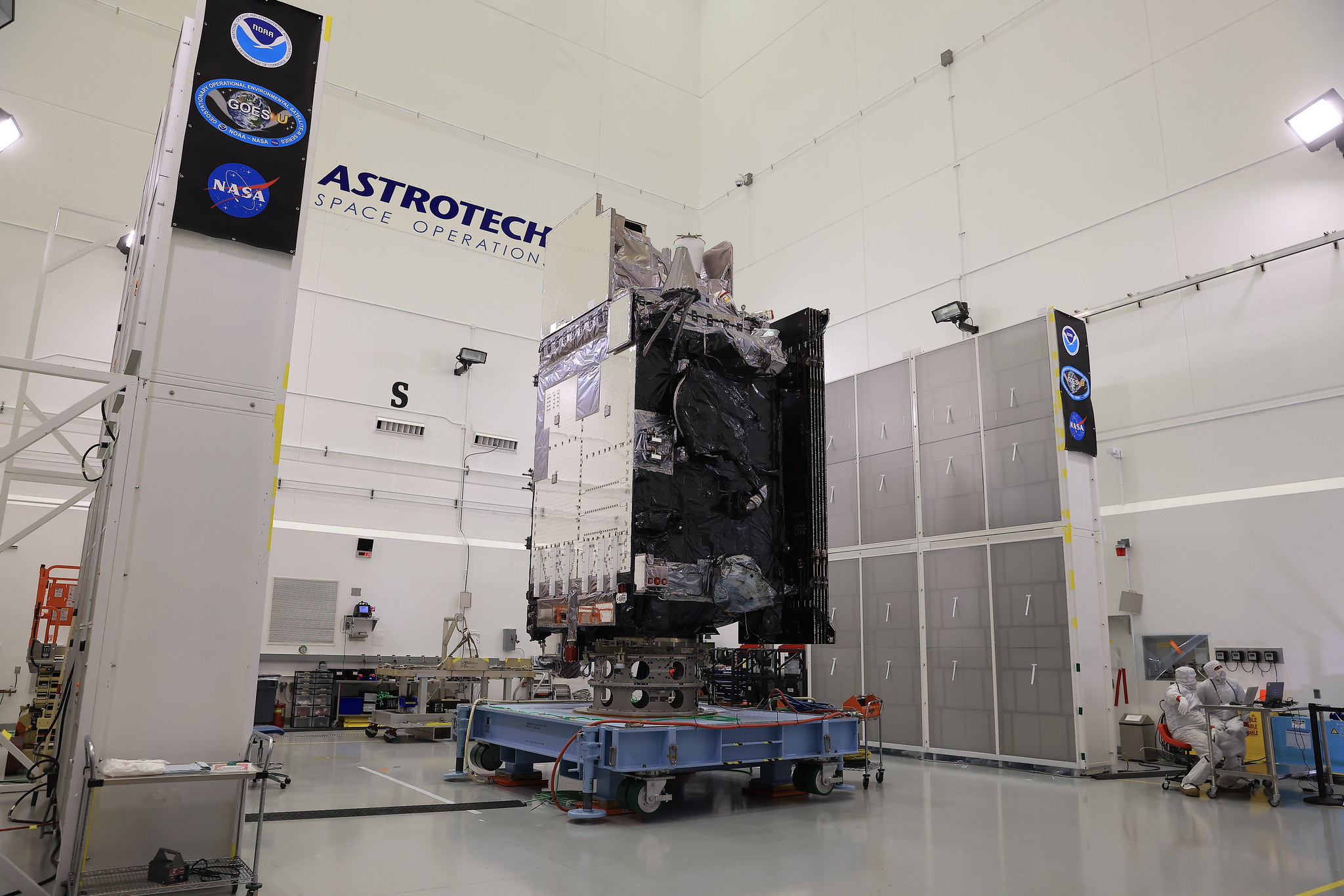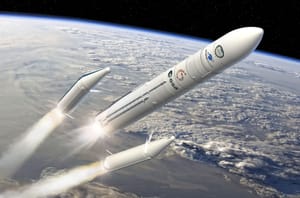
Jun 26, 2024
Falcon Heavy launches GOES-U
On June 25th, 2024 a Falcon Heavy lifted off from the pad carrying 'GOES-U' to GTO. GOES-U will provide advanced imagery and atmospheric measurements of Earth’s weather, oceans, and environment, as well as real-time mapping of total lightning activity and improved monitoring of solar activity and space weather.
This tenth flight of a Falcon Heavy rocket is also the first time that a GOES-R series satellite launched on this vehicle.
Lift-off!
The SpaceX Falcon Heavy rocket lifted off from LC-39A at the Kennedy Space Center in Florida. The Boosters flying on this mission were B1087 which was expended, B1072 which landed at Landing Zone 1, and B1086 which landed at Landing Zone 2. Falcon Heavy has three cores and one second stage to carry the spacecraft into orbit with the second stage also expended.

The GOES-U Spacecraft

Geostationary Operational Environmental Satellites (GOES) is a collaborative NOAA (National Oceanic and Atmospheric Administration) and NASA program providing continuous imagery and data on atmospheric conditions and solar activity.
GOES-U will provide advanced detection and monitoring of environmental phenomena that directly affect public safety, protection of property, and the nation’s economic health. NOAA’s GOES-U is the fourth and final satellite in the Geostationary Operational Environmental Satellites (GOES) – R Series, the most advanced weather-observing and environmental-monitoring system for the Western Hemisphere.
GOES-U will be renamed GOES-19 once it reaches geostationary orbit. After successfully completing on-orbit checks of its instruments and systems, NOAA plans to make GOES-19 operational, replacing GOES-16 as GOES East. GOES-19 will operate in tandem with GOES-18. GOES-U is equipped with a suite of instruments designed to enhance the detection of approaching space weather hazards. The Solar Ultraviolet Imager (SUVI) and Extreme Ultraviolet and X-ray Irradiance Sensors (EXIS) provide imaging of the sun and detect solar flares. The Compact Coronagraph-1 (CCOR-1) images the solar corona, the outer layer of the sun’s atmosphere, to detect and characterize coronal mass ejections (CMEs). CCOR-1 is a new instrument for GOES-U and is part of NOAA’s Space Weather Follow-On mission. Additionally, the Space Environment In-Situ Suite (SEISS) and the Magnetometer monitor energetic particles and magnetic fields, respectively.

The GOES-U satellite carries several advanced instruments designed to improve our ability to detect and respond to space weather events. One of these instruments, the Solar Ultraviolet Imager (SUVI), along with the Extreme Ultraviolet and X-ray Irradiance Sensors (EXIS), captures images of the sun and identifies solar flares. These solar flares can have significant impacts on Earth, such as disrupting communications and power systems.

Another key instrument on GOES-U is the Compact Coronagraph-1 (CCOR-1), which is a new addition specifically for this mission. CCOR-1 takes images of the sun’s outer atmosphere, known as the corona, to spot and analyze coronal mass ejections (CMEs). CMEs are large expulsions of plasma and magnetic field from the sun’s corona that can cause severe space weather effects when they reach Earth. CCOR-1 is part of NOAA's broader Space Weather Follow On mission, aimed at enhancing our space weather monitoring capabilities.
Additionally, the satellite features the Space Environment In-Situ Suite (SEISS) and a Magnetometer. SEISS measures energetic particles in space, while the Magnetometer tracks changes in the magnetic field. These measurements are crucial because variations in space weather can lead to disruptions in power grids, satellite operations, and communication and navigation systems. By combining the data from these instruments, scientists can provide more accurate space weather forecasts and early warnings, helping to protect technology and infrastructure on Earth.
The Goes-U's Coronagraph is what makes this GOES satellite so unique. This satellite will be more focused on solar observations
This is another step forward in not just science but actively helping assist life on earth.
The successful launch of GOES-U aboard a Falcon Heavy on June 25, 2024, marks a significant milestone in advancing mankinds capabilities for weather observation and environmental monitoring. As the fourth and final satellite in the GOES-R Series, GOES-U—soon to be renamed GOES-19—will enhance NOAA’s ability to detect and respond to space weather hazards, providing critical data to safeguard life and property. With its state-of-the-art instruments, GOES-19 will replace GOES-16 as GOES East, operating in tandem with GOES-18 to deliver unparalleled coverage and insight into atmospheric and solar phenomena. This launch represents a major leap forward in ensuring the resilience and safety of communities across the Western Hemisphere.



